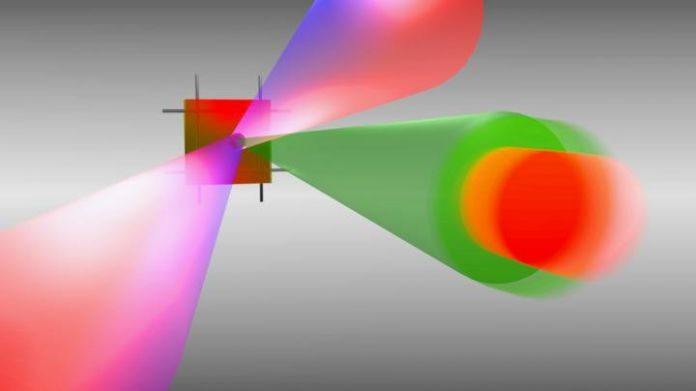Scientists from the Chalmers University of Technology discovered a whole new approach of using lasers to accelerate ion beams. Instead of using typical particle accelerators, scientists used a laser to give the right energy to ions. This new technique could give more people access to advanced cancer treatment. There are only a few ways to accelerate ion using lasers. But none of them can efficiently control the ions in an organized manner.
Scientists send a laser beam that strikes a thin foil. Once laser pulse hits the foil, the ionized atoms and the material is transfer to a plasma. Thus, some electrons get a discharge and accelerate away. The electric voltage created between the displaced electrons and the positive ions drags the ions out of the material, and the process provides them with high energy.
Sometimes, advanced ion technology used to diagnose inoperable tumors like brain tumors. The concentrated ion beams in this treatment knock cancer cell. It happens without damaging healthy living tissues by using a cyclotron accelerator.
So, the team of scientists develops Chirped-Standing-Wave Acceleration technique. It depends on a particle accelerator which accelerates ion by using a laser, in contrast to conventional accelerators that use electric fields to accelerate ions. This is a small step towards the ultimate goal of treating cancer tumors in a way that provides enormous benefit to society.
Arkady Gonoskov, the postdoctoral researcher in physics, said, “We knew that a laser could trap electrons. But, we did not know how to move the particles so that they could drag the ions with them. We found an elegant solution to this puzzle by letting the laser’s wavelength vary continuously, in such a way that the ions are accelerating.”
This method can capture, stabilize and organize scores of ions with high precision without using massive energy.
Professor Mattias Marklund, said, “Only very few patients can receive the treatment today. Because such a facility is not even available in every European country. Using our method to control the ions, the same technology will hopefully in the future be used in equipment that is compact, inexpensive, and easy to use.”
Although, this new technique is tested with advanced computer simulations. But, experiments planned in cooperation with Lund University.
